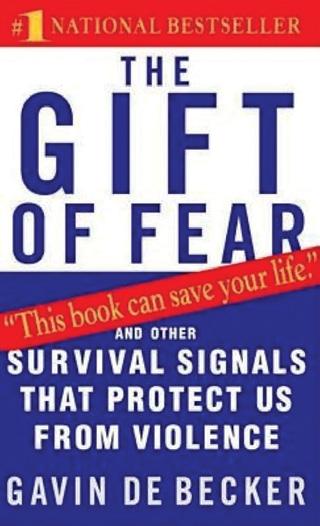
6 minute read
REALTOR® Safety
BY PAMELA BARNUM
As a former undercover drug enforcement officer, I encountered countless situations where my personal safety was at risk. The dangers faced by REALTORS® are strikingly similar to those in law enforcement.
The key to navigating these dangers is a combination of awareness, preparation, and strategic action. Based on my 20 years in the criminal justice system, the following is an overview of insights and safety practices to help REALTORS® protect themselves while maintaining professionalism.
Understanding the Risks
In both undercover work and real estate, the element of unpredictability is ever-present. REALTORS® often work alone, meet unfamiliar people, and visit remote properties, which can increase their vulnerability to potential threats. Recognizing these risks is the first step in mitigating them.
The drug enforcement section I worked with utilized SMEACs (Situation, Mission, Execution, Administration/ Logistics, and Command/Control), a military acronym, to prepare for undercover drug buys.
A SMEAC framework for REALTOR® safety helps ensure a safe and successful property showing, which may include the following:
Situation
Safety Considerations
The property is vacant, and the client is new. There is a need to verify the client’s identity and maintain situational awareness during the showing.
Mission
Objective
Conduct a safe and effective property showing for the client, emphasizing the property’s features and benefits while ensuring personal safety and security.
Execution
Preparation
Verify the client’s identity before the meeting.
Inform a colleague or family member of the showing schedule and location.
Arrive early to assess the property and identify escape routes.
Showing Strategy
Meet the client in a public place first, if possible, before proceeding to the property.
During the showing, stay near exits and avoid entering confined spaces with the client.
Trust your instincts and be prepared to leave if you sense danger.
Follow-Up
Debrief with a colleague after the showing to discuss any concerns.
Document the meeting details, including any unusual observations.
Administration/Logistics
Supplies
Carry safety tools such as a personal alarm or use a safety app with emergency alert features.
Ensure all marketing materials and digital devices are ready and accessible.
Transportation
Confirm transportation arrangements and ensure your vehicle is parked in a well-lit, accessible area.
Command/Control
Communication
Use a safety app to allow real-time location tracking by a trusted contact.
Maintain open communication with the client throughout the process.
Responsibilities
The real estate professional is responsible for ensuring both the safety and success of the showing.
Any assistants or team members should be briefed on safety protocols and their roles in the showing.
Let’s dive deeper and unpack the SMEAC with more details and examples.
Pre-Meeting Precautions
Investing time before you meet the client can feel onerous and time-consuming. I used to feel that way while working undercover; I just wanted to get on with the deal so that I could work toward the next one. Unfortunately, when shortcuts were taken, it would put me in dangerous situations that could have been avoided. You can use three simple tactics to reduce your risk significantly.
Client Verification. Just as in undercover operations, verifying the identity of individuals you interact with is crucial. Request identification and conduct a brief online search to ensure authenticity before meeting new clients.
Share Your Schedule. Keeping others informed of your whereabouts is a fundamental safety measure. Share your schedule with a trusted colleague or family member and consider using a safety app that allows real-time location tracking.
Meet in Public Places First. For initial meetings, choose a public setting, such as a coffee shop or your real estate office. This controlled environment allows for a preliminary assessment of the client before proceeding to property viewings.
Safety During Showings
Arrive Early. Arriving ahead of time allows you to assess the property and identify potential escape routes or hazards, similar to reconnaissance of a location in undercover operations.
Have a Partner. When possible, bring a colleague or friend to property showings. The presence of an additional person can deter potential threats.
Stay Near Exits. There is a reason why so many police have officers close to exits or seated with their backs against a wall. Officer safety requires them to have an easy exit and a visual on their surroundings. Real estate agents can maintain awareness of their surroundings and position themselves near exits during showings. Avoiding confined spaces with clients, such as basements or attics, is also highly recommended.
Trust Your Instincts. In law enforcement, intuition is a valuable tool. Trust your instincts and remove yourself immediately if you sense danger or feel uneasy. I highly recommend Gavin de Becker’s book, The Gift of Fear. He offers valuable insights on how to trust our gut when we need it most.

Technology as a Safety Tool
I worked in an era before everyone had apps and cameras on their phones; remember the old days of flip phones and pagers? Those were my tools while working undercover. However, there are now countless safety apps and devices. This article is not an exclusive list or personal recommendations. I’ve listed a few examples and encourage you to use the technology recommended by your organization.
Safety Apps. Use safety apps made for REALTORS®, like bSafe, Real Safe Agent, TetherRE, or Forewarn. These apps provide features such as emergency alerts and location tracking, adding an extra layer of security.
Smart Devices. Consider carrying a personal safety device, such as a panic button or smart keychain. These devices can send an emergency alert with your GPS location to pre-selected contacts.
Post-Meeting Practices
Debrief with Colleagues. After a meeting, debrief with a colleague or manager to discuss any concerns or unusual behavior exhibited by the client. Every drug deal I was involved in while working undercover was debriefed and analyzed for officer safety.
Document Everything. Maintain detailed records of your meetings, including the client’s contact information, the date and time, and any noteworthy observations.
Continuous Education
Safety Training. Participate in regular safety training sessions and workshops. Many real estate associations offer courses on personal safety and risk management.
Stay Informed. Keep abreast of local crime trends and safety alerts. This information can help you decide where and when to meet clients.
Cultivating a Safety-Conscious Culture
Office Policies. Encourage your real estate office to establish and enforce safety policies, such as mandatory check-ins, safety briefings, and a buddy system for showings.
Community Engagement. Engage with local law enforcement and community organizations to promote REALTOR® safety and awareness. Building relationships with these groups can provide additional support and resources.
Safety in the real estate industry requires vigilance and proactive measures. By implementing these safety strategies, REALTORS® can reduce risks and ensure a safer working environment. Remember, no transaction is worth compromising your safety. Prioritize your well-being and make informed decisions to protect yourself while serving your clients effectively.
Pamela Barnum
As a former undercover drug enforcement officer, Pamela Barnum possesses expertise that lends itself to REALTOR® Safety. As a communication expert and trust strategist, Pamela delivers techniques once thought of as a “secret second language” that participants can begin using with your clients immediately—and you can learn more of this when you attend our Annual Conference,
“Charting New Waters,” and listen to Pamela’s keynote speech on October 20, about being a trust strategist for your clients.










